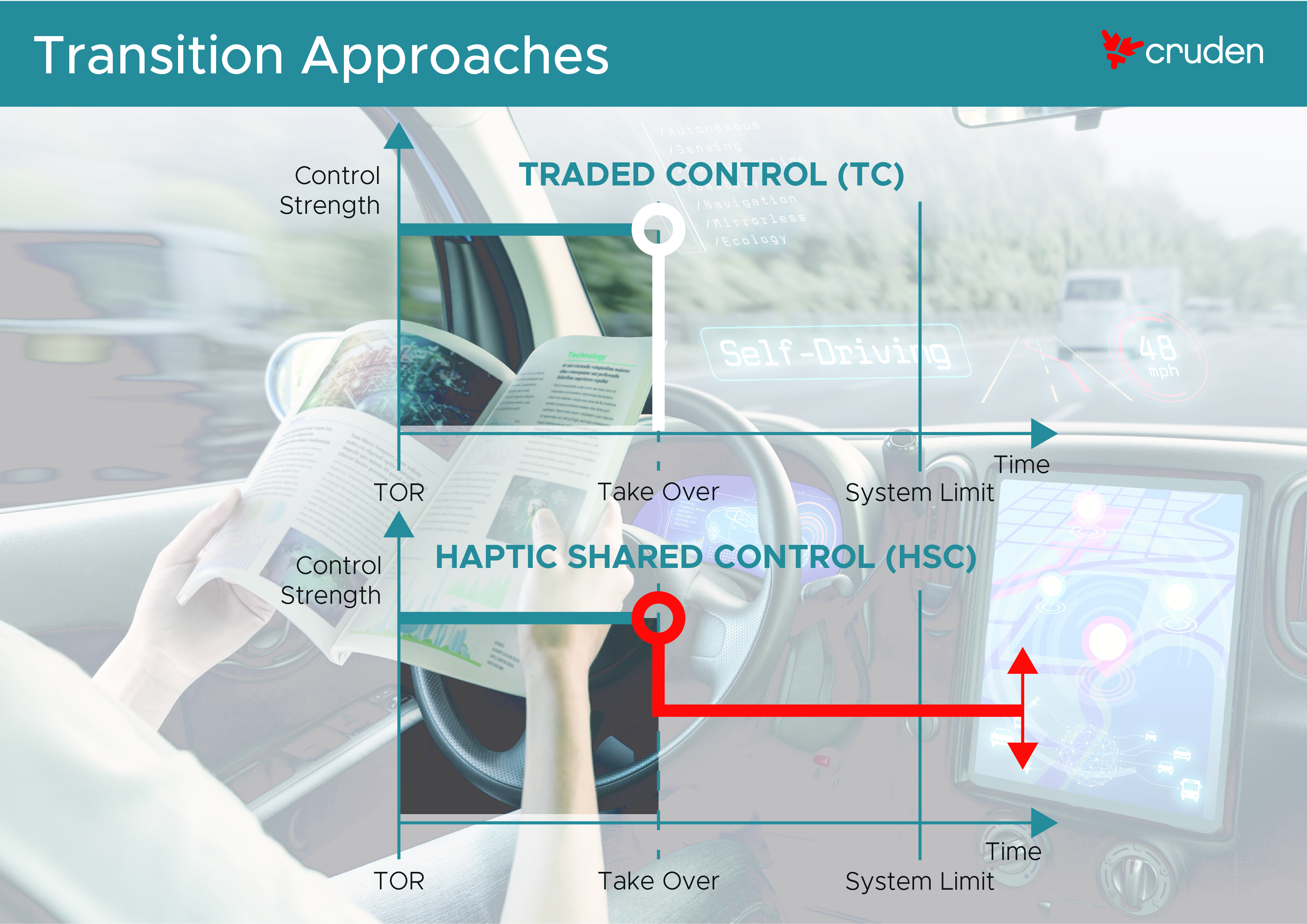We’ve already seen the first implementations of SAE Level 3 automation on new vehicles, building on the now-proven reliability and safety benefits of Level 2 ADAS systems such as lane-keeping assist (LKA) and lane-change assist (LCA). The deployment of L3 systems will soon become more widespread, especially in controlled environments such as on divided highways, but challenges remain in their implementation on less predictable roads and in moving to even greater levels of automation (Level 4 and above).
Central to these challenges is the question of control handover between the automated system and the human driver: sometimes planned, and sometimes unexpected. This problem is already manifested in the varying degrees of torque resistance that drivers experience from the LKAs of different OEMs: how much the system ‘fights’ for what it thinks is the correct steering position and vehicle trajectory, versus how much it trusts the driver to do the right thing.
As a society we remain a long way from being able to always guarantee the safety of automated driving, wherever we’re driving, so solving issues around shared control and vehicle/human control transitions will remain key to progressing ADAS and automated driving technologies for some time to come.
Driving simulators are extremely useful tools, both in researching driver behaviour to inform new technology development in control handover, and in testing the technologies themselves in a safe environment. In 2019, for example, a Cruden simulator was used by a team from TU Delft to investigate variability in lane-change behaviour between different drivers, and by the same driver. The aims were to quantify the inter- and intra-driver variability in lane-change behaviour, and to analyse lane changes in terms of both duration and steering behaviour.
The investigation found a lot of variation in lane-change behaviour, showing that a measured steering behaviour does not accurately capture the final lane-change duration. Two lane-changes of similar duration could result from completely different steering behaviour. Some of this variation was due to differences in what the team called, “spatio-temporal criticality”: logically enough, the same driver naturally performs the maneuver differently depending on the amount of time and space available.
As a result, the researchers proposed that vehicle trajectories when changing lanes should be based on steering behaviour rather than lane-change duration. This could help to avoid steering-torque conflicts and improve customer acceptance when designing ADAS and automated driving functions using a shared control approach.
Other recent studies using the concept of traded control – instantaneous transfer from L3 automation back to manual control – have shown that these transitions from hands-off to manual control may require a take-over-time (TOT) ranging from 1 to 20 seconds, when responding to a warning signal to resume control. This total interval consists of a take-over reaction time (TOrt), a neuromuscular response time, and the actual manual control action – essentially, the time it takes a human to be in full control of the car, starting from the moment the AV requests the handover. A few seconds of degraded vehicle handling may follow – swerving, overshoots in manoeuvres and reduced situational awareness.
An alternative approach to transitioning is possible, however. In this case, taking hold of the steering wheel does not shut down the automation but reduces the level of haptic authority towards a L2 LKA that is capable of supporting driver-initiated lane-changes. This is known as haptic shared control. Researchers from the Delft University of Technology worked with a Cruden AS2 driving simulator on a study that investigated to what extent the degraded vehicle handling from traded-control transitions was mitigated by transitioning back to haptic shared control.
The team employed 30 driver participants to compare traded control to shared control transitions during highway driving at 100km/h (62mph), with a forced lane-change scenario due to a stopped vehicle in the driving lane. It analysed TOrt, longitudinal and lateral safety margins to the lead vehicle, swerving and self-reported questionnaires.
The results were interesting. Compared with traded control transitions, haptic shared control transitions enabled drivers to swerve less, and respond with larger longitudinal and smaller lateral safety margins to the lead vehicle. No differences were observed in terms of take-over-reaction time, or the self-reported questionnaires. The findings suggest that a shared transition back to haptic lane-keeping support mitigates the reduced vehicle handling after a traded transition back to manual control.
In the future, driving simulators will continue to feature prominently in the further research needed into the control handovers between humans and automated systems.
The benefit of a driving simulator for this research is twofold: repeatability of experiments and the ability to experiment with dangerous situations in a safe way.
The crucial issue at stake is the need to build drivers’ trust in ADAS and automated driving technology. Without it, the more advanced, more highly automated systems will struggle for market acceptance, no matter how great the advertised safety benefits. If drivers find a system too annoying to deal with, or fail to trust its accuracy, then it risks being switched off – at which point, any safety benefit is lost.



